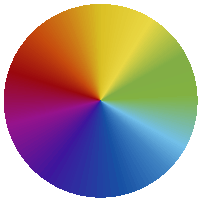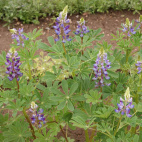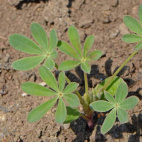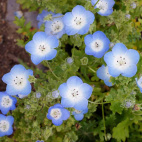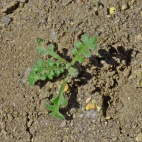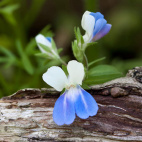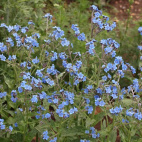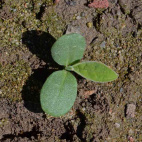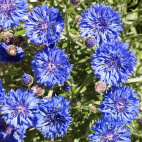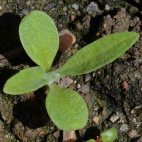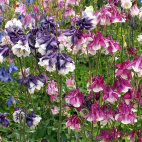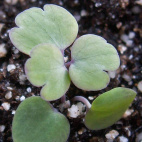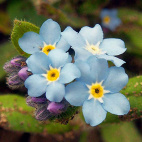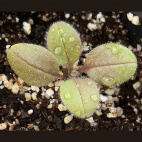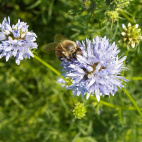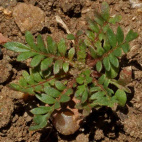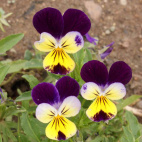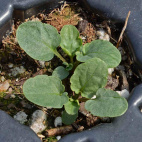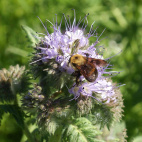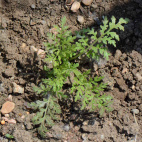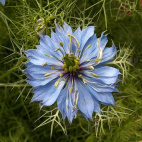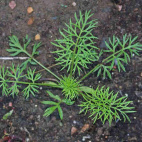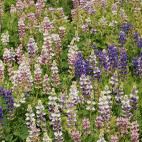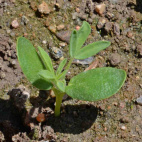Color
Availability
USDA Zone
Region
Type
Duration
Season
Germination
Soil
Sunlight
Height
Use
Narrow Your Search
Color
Availability
USDA Zone
Region
Type
Duration
Season
Germination
Soil
Sunlight
Height
Use
Wildflower Seeds - California Region
The wildflower species listed in the California Region are those that would grow well in the Central Valley as well as the coastal areas of Southern California. If you are in the mountains you might want to check out the Mountain Region, or if you are in the desert areas in the south, you'll want to look at the Dry West Region. The species of bulk wildflowers listed on this page are those that are either native here, or are annuals that grow well in this zone. There are hundreds of bulk California wildflower seeds to choose from, so please use the filters along the left side of the screen to narrow your search to match your soils, lighting, and any other attributes that you may want. If you are looking for something that is strictly native to your immediate area, you can check out the distribution map that is found on the detail pages of most of the species.
-
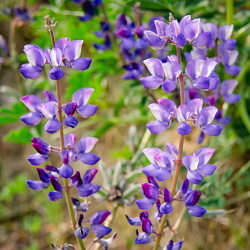 Arroyo Lupine Seeds
Lupinus succulentus
Though native to California, this lovely wildflower can be found throughout the American southwest. This annual grows quickly and is very easy to grow in the garden, no matter where you live.Quick Viewx
Arroyo Lupine Seeds
Lupinus succulentus
Though native to California, this lovely wildflower can be found throughout the American southwest. This annual grows quickly and is very easy to grow in the garden, no matter where you live.Quick ViewxArroyo Lupine Seeds
Lupinus succulentus
Though native to California, this lovely wildflower can be found throughout the American southwest. This annual grows quickly and is very easy to grow in the garden, no matter where you live.
$3.48 Pkt - $9.15 / Oz -
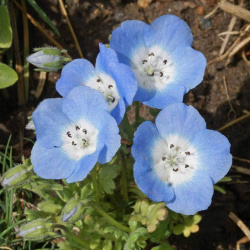 Baby Blue Eyes Seeds
Nemophila menziesii
Early spring brings this baby-blue annual to the foothills and grasslands of the western United States. Its petite habit makes it an excellent choice for massed plantings, containers, and borders.Quick View$2.98 Pkt - $9.35 / Oz
Baby Blue Eyes Seeds
Nemophila menziesii
Early spring brings this baby-blue annual to the foothills and grasslands of the western United States. Its petite habit makes it an excellent choice for massed plantings, containers, and borders.Quick View$2.98 Pkt - $9.35 / Oz -
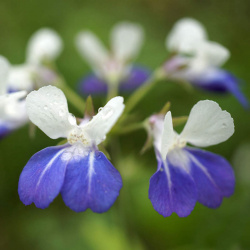 Out Of Stock
Blue Eyed Mary Seeds
Collinsia grandiflora
Expect compliments on this blue-eyed little beauty. The bright flower naturally grows in dry prairies, rocky areas, or at the border of woodlands, but seems quite at home in most average garden conditions as well.Quick Viewx
Out Of Stock
Blue Eyed Mary Seeds
Collinsia grandiflora
Expect compliments on this blue-eyed little beauty. The bright flower naturally grows in dry prairies, rocky areas, or at the border of woodlands, but seems quite at home in most average garden conditions as well.Quick ViewxBlue Eyed Mary Seeds
Collinsia grandiflora
Expect compliments on this blue-eyed little beauty. The bright flower naturally grows in dry prairies, rocky areas, or at the border of woodlands, but seems quite at home in most average garden conditions as well.
$3.48 Pkt - $10.19 / Oz -
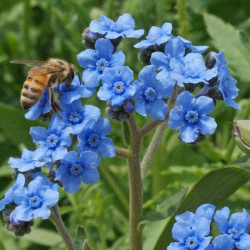 Chinese Forget Me Not Seeds
Cynoglossum amabile
Ever a favorite, these dainty blue flowers will charm any heart. This annual Asian variety has slightly larger flowers and rougher foliage than true Forget Me Not, but grows faster, and produces blooms sooner.Quick View$3.48 Pkt - $5.96 / Oz
Chinese Forget Me Not Seeds
Cynoglossum amabile
Ever a favorite, these dainty blue flowers will charm any heart. This annual Asian variety has slightly larger flowers and rougher foliage than true Forget Me Not, but grows faster, and produces blooms sooner.Quick View$3.48 Pkt - $5.96 / Oz -
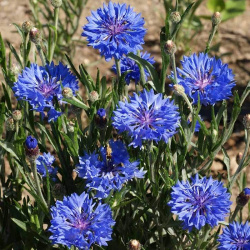 Dwarf Blue Bachelor Button Cornflower Seeds
Centaurea cyanus
Best known for its vivid blue color, this old-fashioned annual wildflower continues to be a favorite. Lovely fresh or dried, this dwarf grows less than a foot tall and works well in small spaces.Quick View$3.48 Pkt - $5.96 / Oz
Dwarf Blue Bachelor Button Cornflower Seeds
Centaurea cyanus
Best known for its vivid blue color, this old-fashioned annual wildflower continues to be a favorite. Lovely fresh or dried, this dwarf grows less than a foot tall and works well in small spaces.Quick View$3.48 Pkt - $5.96 / Oz -
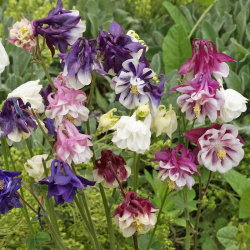 Dwarf Columbine Seed Mix
Aquilegia vulgaris
These delicate, nodding blossoms grow wild throughout much of northern Europe. This 16" dwarf variety produces a lovely mix of colors that will brighten any space!Quick View$3.48 Pkt - $12.65 / Oz
Dwarf Columbine Seed Mix
Aquilegia vulgaris
These delicate, nodding blossoms grow wild throughout much of northern Europe. This 16" dwarf variety produces a lovely mix of colors that will brighten any space!Quick View$3.48 Pkt - $12.65 / Oz -
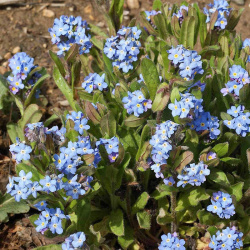 Forget Me Not Seeds
Myosotis sylvatica
One of the most beloved wildflowers, this true blue beauty captivates gardeners worldwide. Plant this annual en masse or as a border for an unforgettable spring bloom. Do not confuse this original wildflower with the Chinese Forget Me Not.Quick View$2.98 Pkt - $11.47 / Oz
Forget Me Not Seeds
Myosotis sylvatica
One of the most beloved wildflowers, this true blue beauty captivates gardeners worldwide. Plant this annual en masse or as a border for an unforgettable spring bloom. Do not confuse this original wildflower with the Chinese Forget Me Not.Quick View$2.98 Pkt - $11.47 / Oz -
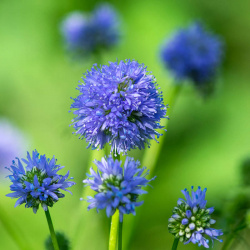 Globe Gilia Seeds
Gilia capitata
These pretty pincushion-like globes come in a lovely violet-blue hue. They are native to the West Coast but are grown as an annual in flower gardens across the US. The sweetly scented blossoms are also very attractive to butterflies.Quick View$2.98 Pkt - $7.65 / Oz
Globe Gilia Seeds
Gilia capitata
These pretty pincushion-like globes come in a lovely violet-blue hue. They are native to the West Coast but are grown as an annual in flower gardens across the US. The sweetly scented blossoms are also very attractive to butterflies.Quick View$2.98 Pkt - $7.65 / Oz -
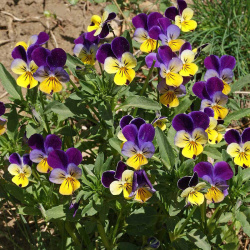 Helen Mount Johnny Jump Up Seeds
Viola tricolor
With cheery purple, yellow, and white faces, this charming wildflower looks a mini version of the pansy. This petite beauty often reseeds itself and springs up voluntarily year after year.Quick View$3.48 Pkt - $14.07 / Oz
Helen Mount Johnny Jump Up Seeds
Viola tricolor
With cheery purple, yellow, and white faces, this charming wildflower looks a mini version of the pansy. This petite beauty often reseeds itself and springs up voluntarily year after year.Quick View$3.48 Pkt - $14.07 / Oz -
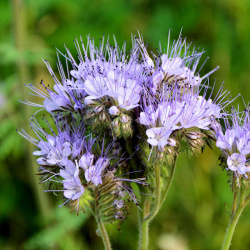 Lacy Phacelia Seeds
Phacelia tanacetifolia
This annual is a popular honey plant and creates an unforgettable lavender carpet that is always buzzing. The resilient desert native flourishes in lots of sunlight, and can handle heat and drought. It also is effortless to grow and produces a lot of seeds that can sprout the following year.Quick Viewx
Lacy Phacelia Seeds
Phacelia tanacetifolia
This annual is a popular honey plant and creates an unforgettable lavender carpet that is always buzzing. The resilient desert native flourishes in lots of sunlight, and can handle heat and drought. It also is effortless to grow and produces a lot of seeds that can sprout the following year.Quick ViewxLacy Phacelia Seeds
Phacelia tanacetifolia
This annual is a popular honey plant and creates an unforgettable lavender carpet that is always buzzing. The resilient desert native flourishes in lots of sunlight, and can handle heat and drought. It also is effortless to grow and produces a lot of seeds that can sprout the following year.
$3.48 Pkt - $5.96 / Oz -
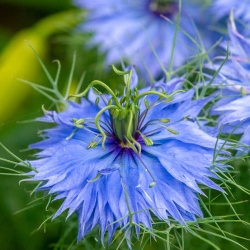 On Sale!
Love In A Mist Seeds
Nigella damascena
A time-honored favorite in English cottage gardens, this annual originally comes from the Mediterranean region. It blooms in colors like blue, pink and white, and can be enjoyed either fresh or in dried flower arrangements.Quick View$3.48 Pkt - $7.01 / Oz
On Sale!
Love In A Mist Seeds
Nigella damascena
A time-honored favorite in English cottage gardens, this annual originally comes from the Mediterranean region. It blooms in colors like blue, pink and white, and can be enjoyed either fresh or in dried flower arrangements.Quick View$3.48 Pkt - $7.01 / Oz -
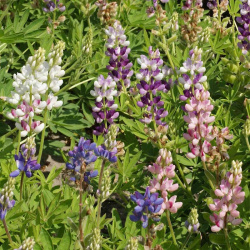 Sky Lupine Seeds
Lupinus nanus
This dwarf variety is a mixture of the various colors of Lupines found in the mountains and valleys of the West. These can be quickly grown as colorful annuals in gardens all over the country.Quick View$3.25 Pkt - $7.52 / Oz
Sky Lupine Seeds
Lupinus nanus
This dwarf variety is a mixture of the various colors of Lupines found in the mountains and valleys of the West. These can be quickly grown as colorful annuals in gardens all over the country.Quick View$3.25 Pkt - $7.52 / Oz
The wildflower species listed in the California Region are those that would grow well in the Central Valley as well as the coastal areas of Southern California. If you are in the mountains you might want to check out the Mountain Region, or if you are in the desert areas in the south, you'll want to look at the Dry West Region. The species of bulk wildflowers listed on this page are those that are either native here, or are annuals that grow well in this zone. There are hundreds of bulk California wildflower seeds to choose from, so please use the filters along the left side of the screen to narrow your search to match your soils, lighting, and any other attributes that you may want. If you are looking for something that is strictly native to your immediate area, you can check out the distribution map that is found on the detail pages of most of the species.

